The Great Lotus Europa / Datsun F10 Master Cylinder Swap begins
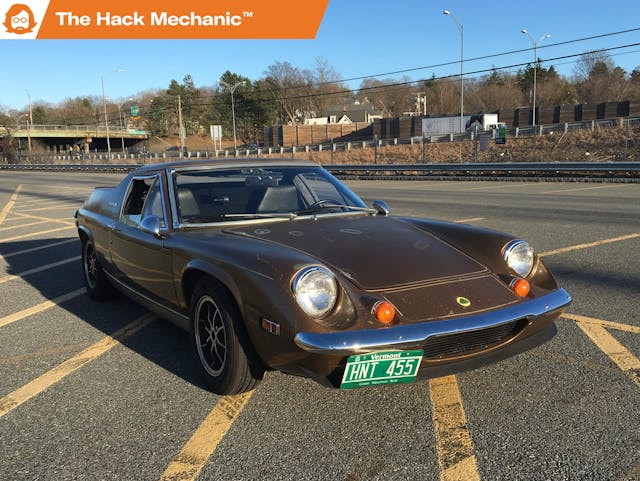
I’ve made a career (if you call this a career) out of writing about working on my cars and detailing the joy that comes from identifying a problem, crafting a solution, and putting it into practice, thereby completely solving the problem with your own brain and hands.
Of course, that has to be balanced against the times you simply want to light the goddamned thing on fire and walk away from the smoldering remains, turning around only to be certain that it really is on fire.
Such is sometimes the case with “Lolita,” my 1974 Lotus Europa Twin Cam Special.
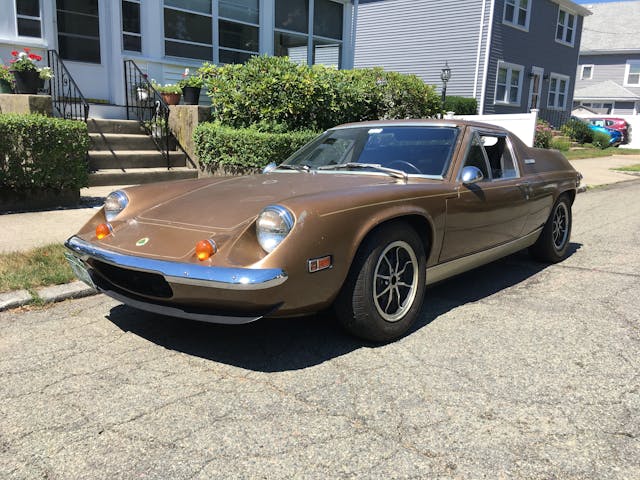
To be clear, I love the car, and it’s actually been quite reliable since I resurrected it four years ago from its 35-year-long slumber. But due to its design as the first quasi-affordable mid-engine fiberglass-body-on-steel-backbone Le Mans-type street car, many repairs or modifications that would be trivial in a normal car send you down a rabbit hole of rage against the people who designed the thing. Lotus founder Colin Chapman is frequently quoted as saying “Simplify, then add lightness.” Work on one of these for a while and it seems like what was added wasn’t lightness but insanity with a not-so-healthy dose of sadism.
As I’ve written here many times (Google “Rob Siegel Hagerty Lotus”) and detailed in my book The Lotus Chronicles, in addition to the engine having seized from sitting, the car needed nearly every mechanical system refurbished. As part of getting it running and driving safely, I replaced the calipers and rotors, but the original Girling brake master cylinder (MC) appeared to be working, so I left it alone. Besides, I learned that the original MC had long ago become unavailable, so if and when it failed, I’d either need to send it out to someplace like White Post or Applewood for rebuilding, or go down the path of adapting a different master cylinder.
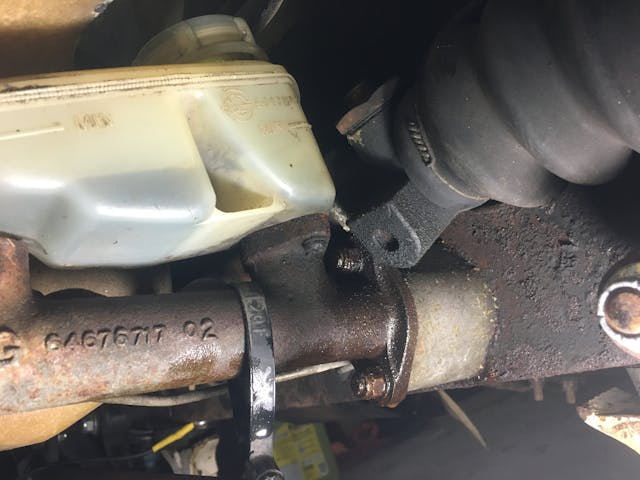
Regarding the latter, the requirements for swapping in a different MC are a bit more numerous and subtle than I first thought.
- The bore size must be the same as or close to that of the original master in order for the pedal effort to be similar.
- It must fit in the same physical space, which means that the holes for the mounting studs and the mounting flange circle have to be the same as the original, or nearly so.
- The brake lines need to be connected to it, so if the fittings on the new unit are different, adaptations need to be made. And if the ports aren’t on the same side, you need to either risk breakage by bending the lines around, or use unions and extension lines.
- The new MC must accept the original pushrod and related linkage that connects it to the brake pedal, or a new pushrod must be fashioned and integrated.
- You need to be able to connect a brake fluid reservoir, whether that’s directly on top of the master or remotely.
Complicating all this is the fact that my Europa is a U.S. Federal-spec car, and any car sold in the United States after 1968 had a tandem braking system with a master cylinder with separate connections for front and rear brakes. This is so, in theory, a car can’t lose all its braking if a brake line ruptures. (I say “in theory” because anyone who’s ever popped a brake line knows that, in practice, you don’t have half your braking; you have a fraction of that, and the heavier the car is, the smaller that fraction is.) So, unless I wanted to lose the tandem functionality, I needed a tandem MC.
The Europa forums have articles about adapting an MC from a Spitfire and a Festiva, and using a generic Tilton or Wildwood master, but for the Federal-spec cars with a tandem master cylinder, the preferred conversion involves using an MC from a 1970s Datsun F10. Unfortunately, like the original Girling cylinder, these are also no longer available (NLA).
You can see why, since Lolita’s master cylinder appeared to be soldering on, I had no desire to fix something that wasn’t broken.
Until last fall. I was driving home from a foliage-peeping trip in Amherst when my brakes began doing something very odd. The pedal would be soft, but when I hit it again, it would immediately be firm. However, if I depressed it even 10 seconds later, it would be soft again. I stopped and found that I had the handbrake on. I thought “D’oh! Well, that explains a lot; I probably shaved half the lining off the rear shoes, and that increased the pedal travel.” I disengaged the handbrake and drove the car home very carefully, pre-pumping the pedal when I needed to slow down.
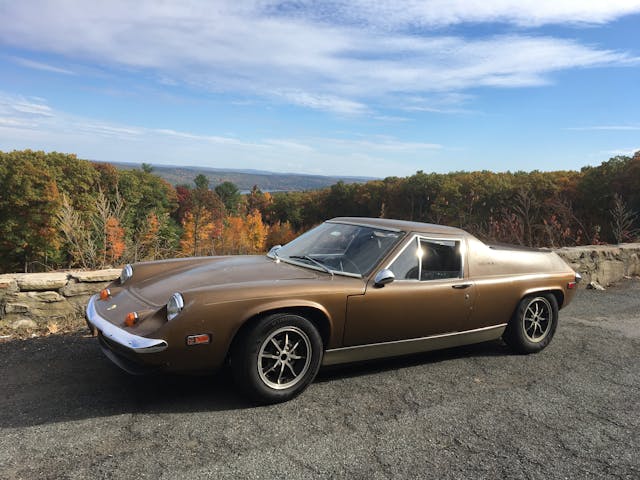
With the car back in my garage, I checked the rear brakes’ adjustment (they’re supposed to be self-adjusting, but I checked anyway) and found nothing wrong. I bled the system (more on that in a moment), but could not make the soft-then-hard pedal problem go away. I concluded that it was time to begin looking at master cylinder replacement.
The Europa forums reported that the Datsun F10 master cylinder (part number 46010-M3802) swap was straightforward. The hole spacing is slightly larger than the studs on the Europa’s bulkhead, but a little routing with a Dremel tool was all that was reportedly necessary to fit it. And word was that it accepts the Europa’s pushrod assembly.
The forums did note that the original brake line fittings are 3/8-24 UNC whereas the F10 MC has 10mm x 1.0 threads, but I’ve made such adaptations before, either by purchasing adapters or building custom brake lines, so I wasn’t overly concerned.
Regarding the reservoir, a remote reservoir tank is likely necessary, as there probably isn’t enough clearance between it and the underside of the fiberglass “frunk” (front trunk; it’s a mid-engine car) for an integrated reservoir. That was fine with me, as one of the odd things about the original Girling master was that the thread specification appeared to have been designed in the Middle Ages, then lost to time. Plus, I have a Motive power brake bleeder that I use on my other cars to self-bleed brakes. You just pour brake fluid into it, screw the cap adapter onto your reservoir, pump it up, and open the bleed valves one wheel at a time. Having relied on the Motive for years, I wanted to use it on the Lotus, but multiple attempts to buy spare reservoir caps and put a pressure fitting in them all failed. None of them sealed correctly against the reservoir, resulting in a brake fluid tsunami in the frunk. I thought that if I was replacing the MC, I could simply mount an old ATE reservoir from a 1970s BMW and use the Motive and the same cap adapter I use on all the BMWs.
It was largely the lure of being able to power-bleed the system that I decided to look for a Datsun F10 master cylinder instead of send the original Girling unit off for rebuild, although having that as an option is always a good thing.
This past March, several NOS F10 master cylinders popped up on eBay, all sold by the same vendor as surplus merchandise from a closed warehouse. For $110, I clicked and bought. And so began The Great Europa F10 Master Cylinder Swap.
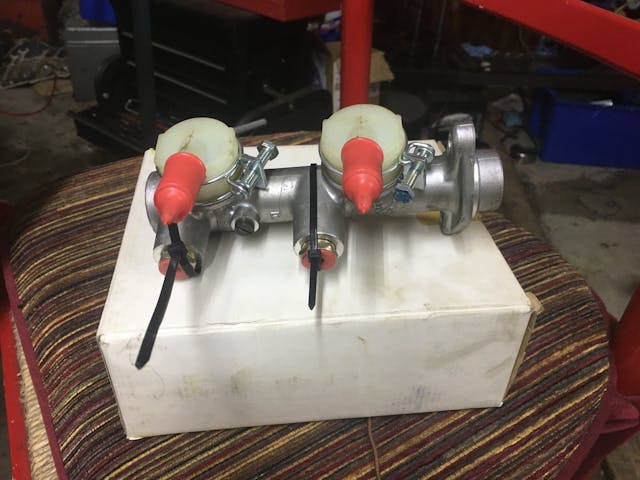
The first problem was in removing the original master. Withdrawing one cotter pin holding the pushrod to the brake pedal, undoing two brake fitting lines, spinning off two half-inch nuts holding it to the studs … I mean, how hard could it be?
Well, funny story.
The Europa is a tiny little mid-engine car with a fiberglass body dropped on a steel backbone. There are certain things that were clearly installed before the body was dropped on, and the master cylinder is one of them. As you can see from the photo below, access to the top bolt holding on the MC is blocked by the steering rack, the reservoir, and the body of the car itself.
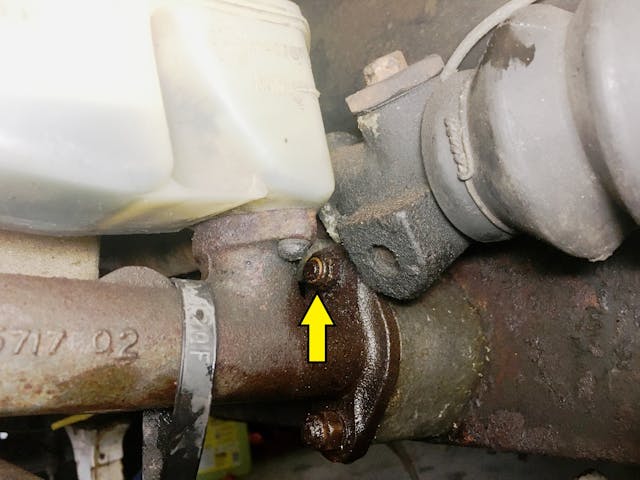
I looked it up on the Europa forum, and found several posts with titles like “How do I get that %#&*! master cylinder top nut off?” After discussions of “Well, you can move the steering rack, but those bolts are probably frozen too,” one of the posts discussed the lubricating effects of curse words. This led to a spirited discussion of the general subject of swearing while working on British cars.
One fellow asked, “If it’s not too much trouble, please post a complete list of cuss words required for Europa maintenance and restoration.”
Another said, “You realize this job is not be undertaken within half a mile of any public schools, hospitals, or churches.”
The original poster replied, “The list of cuss words is very easy. I had them all from my XKE days. It seems any combination of words will work as long as M.F. is used also. But I am still up a m)^&$% f*(^&*% creek without a f&*^%&* paddle with this master cylinder.”
But my favorite was “My father told me a proper Englishman can curse for an hour and never repeat himself. I keep trying.”
I love it when you read a forum and find “your people.”
I thought I might need to strike the upper nut at a tangent with a chisel, but I got it off by rotating the reservoir out of the way, reaching the nut from the top through the reservoir fill hole in the frunk, finding the thinnest half-inch box-end wrench I had, cracking the nut, then using the open-end of the wrench to rotate it an eighth of a turn at a time.
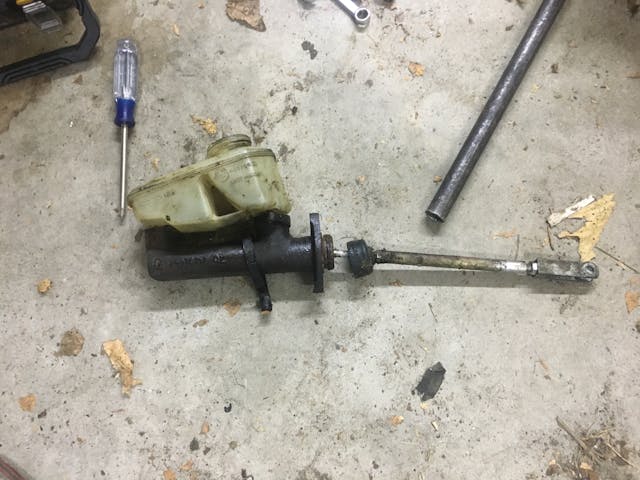
With the MC removed, I took a detour I knew I should but kind of wished I hadn’t. I’d previously found a big mouse nest inside the front section of the Lotus’ frame, had removed what I could, and made a mental note that I could clean out more if the MC was removed. That time was now.
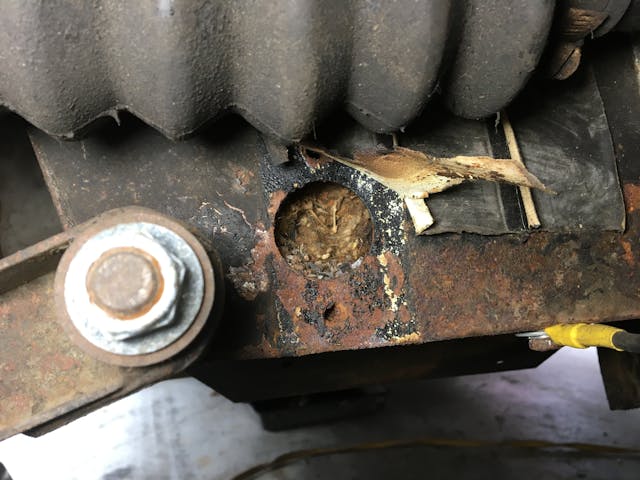
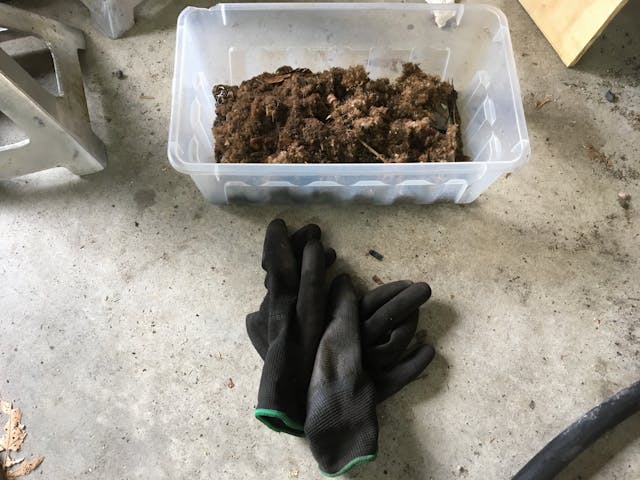
With the MC port on the left side of the frame now open, I reached in with a long set of tweezers and pulled out more nesting material.
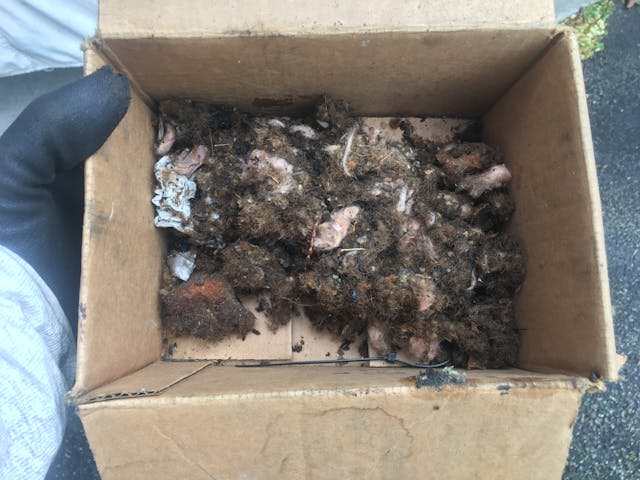
I’m sure that this is just the tip of the, uh, mouseberg—I know that both the hollow frame section as well as the space between it and the fiberglass body have nesting material in them because I snaked a borescope in those areas and looked. If ever I pull the body off the car, I’ll do a proper cleaning, flushing, and disinfecting. For now, I just wanted to get what I could out of the front section.
So did two more things. First, I attached a one-inch hose—small enough to get into the frame’s MC openings—to my shop vac hose with packing tape, snaked it into the openings, and vacuumed out whatever I could reach. Next, I donned a Tyvec suit, a mask, and goggles, fired up the compressor, blew compressed air into one MC opening, and let it fly out the other. Then I switched sides. The resulting collection of mouse dung on the garage floor was truly impressive, and the hot shower I took afterwards was one of the most necessary in recent memory.
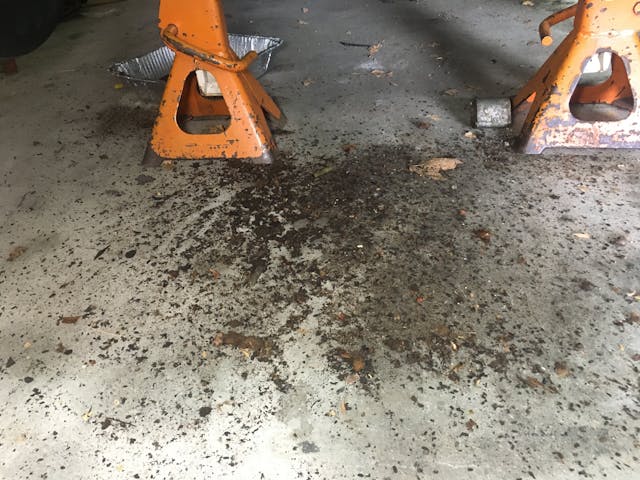
With the preliminaries out of the way, I commenced The Great Europa F10 Master Cylinder Swap itself. Obviously, neither the hard-to-reach upper nut nor the yet-another-mouse-nest-and-dung encounter were the fault of the F10 master cylinder. But I think that its very presence cursed the entire effort, and I’ll get to that next week. Spoiler alert: I wanted to go on the Europa forums and strangle anyone who referred to this as “straightforward.”
***
Rob’s latest book, The Best of the Hack Mechanic™: 35 years of Hacks, Kluges, and Assorted Automotive Mayhem, is available on Amazon here. His other seven books are available here on Amazon, or you can order personally inscribed copies from Rob’s website, www.robsiegel.com.
Check out the Hagerty Media homepage so you don’t miss a single story, or better yet, bookmark it. To get our best stories delivered right to your inbox, subscribe to our newsletters.
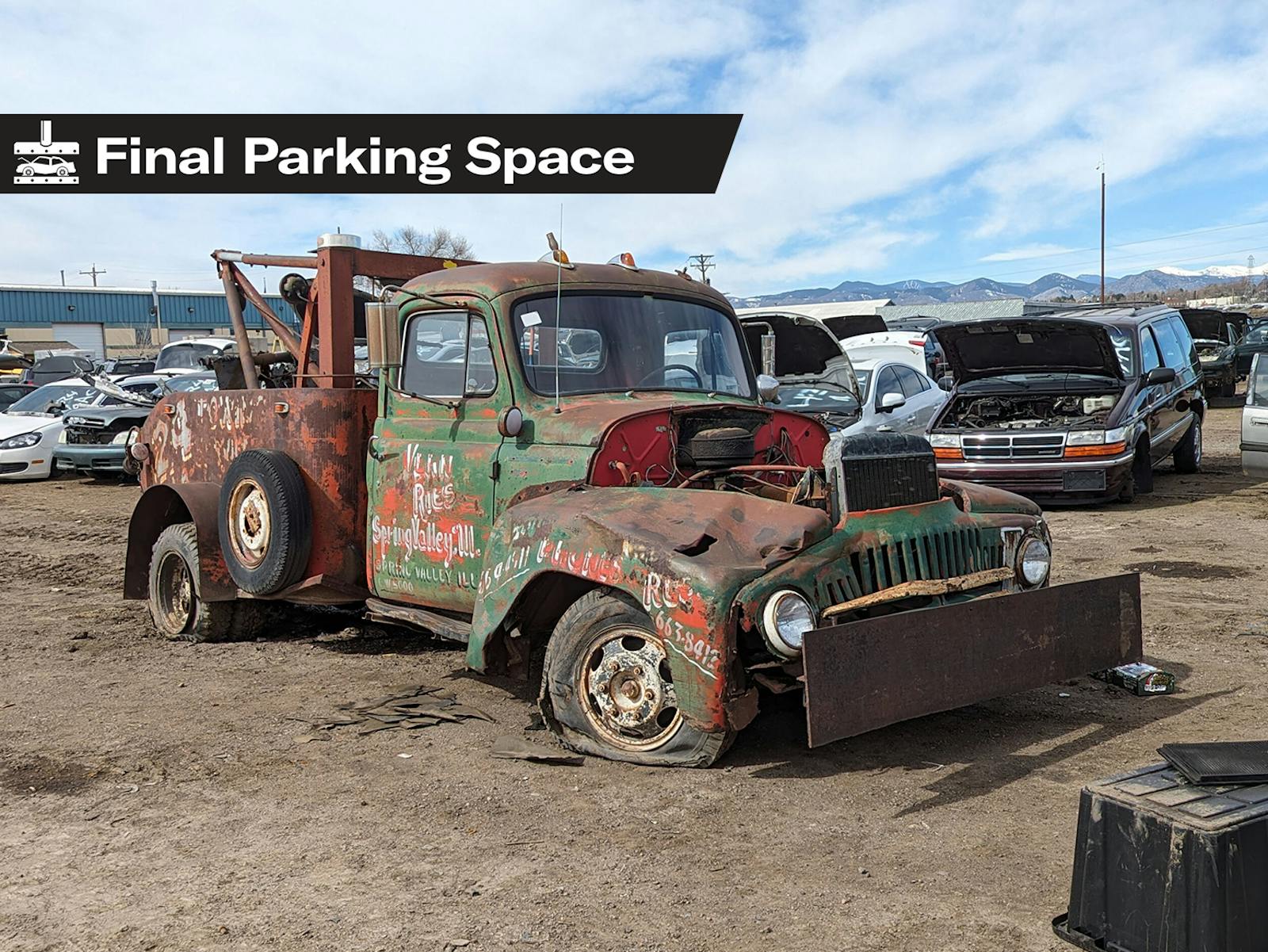
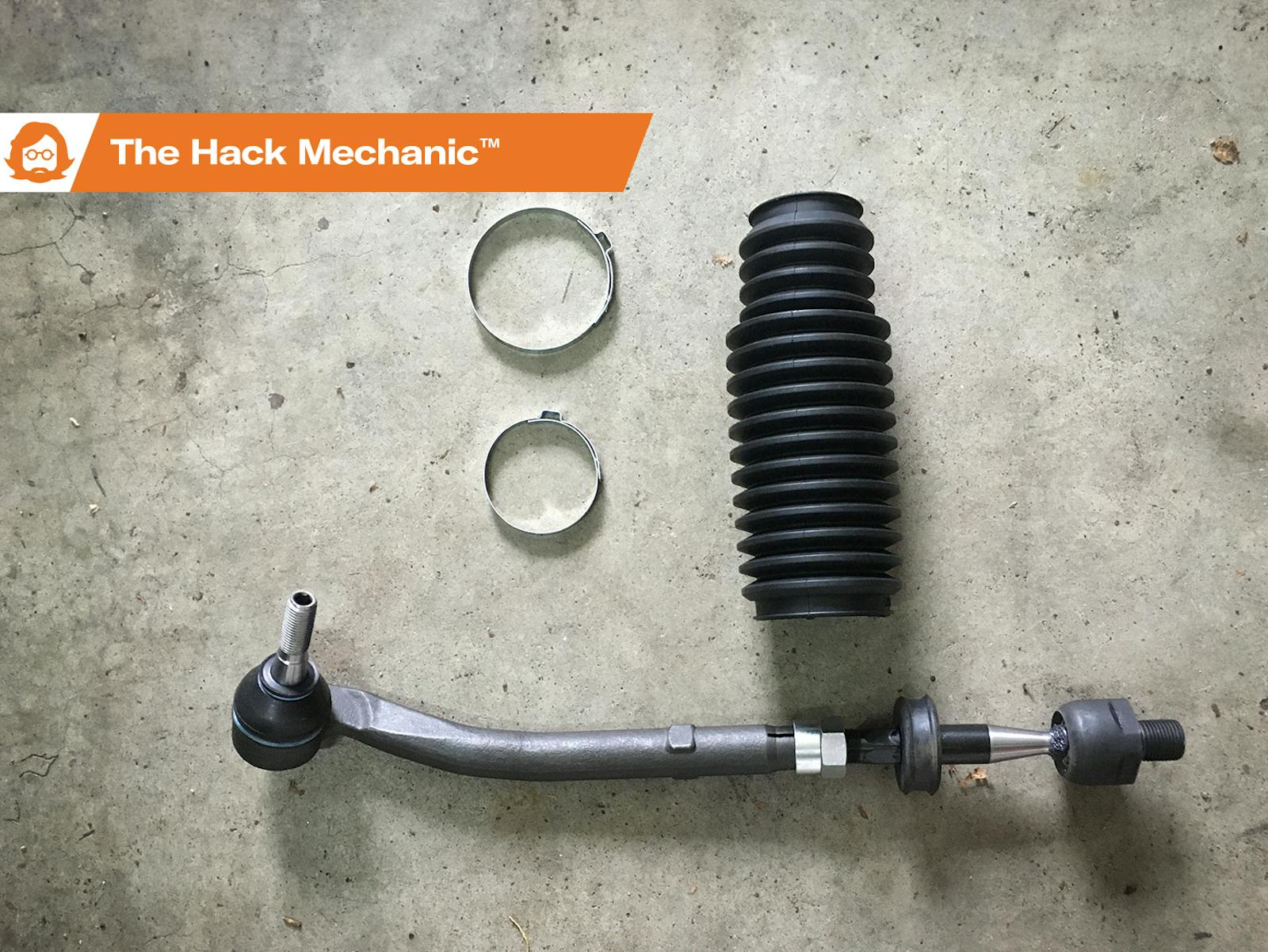
It’s Apple Hydraulics, not Applewood. You should have just let them re-sleeve your MC. Why torture yourself. They sleeved all the original Girling hydraulics for my 1968 TVR Tuscan as well as the Bendix and Kelsey Hayes original date-stamped bits on my 66 Shelby. They all work just fine.
Rob, the 1972-1976 Ford Courier brake master cylinder is an easy swap and looks almost stock. I did this on my S2 Europa and it worked well and looked great. There is an article on he Europa web site for the conversion. CENTRIC 13045501 Includes Reservoir